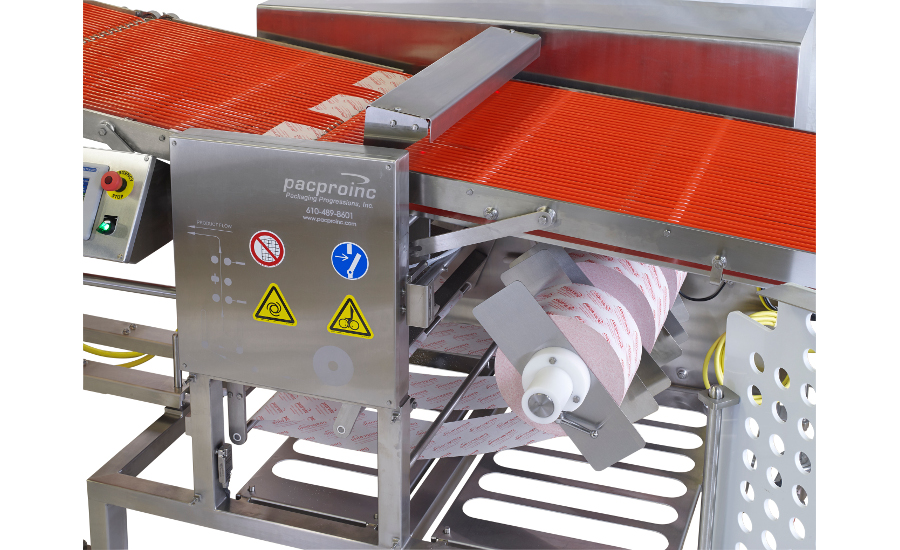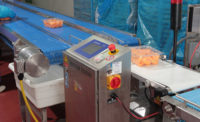How partnering with innovative industry equipment providers can enhance food safety
One of the best ways to achieve success is to partner with innovative industry equipment providers that are responsive to meat and poultry manufacturers’ specific requirements.

Despite ongoing production pressures on meat and poultry operations managers, making the effort to follow best practice sanitary standards can not only enhance food safety and production, but also add value to products. This can help to increase consumer and foodservice sales as well as market share.
One of the best ways to achieve such results is to partner with innovative industry equipment providers that are responsive to meat and poultry manufacturers’ specific requirements.
For example, Land O’Frost, Lansing, Ill., sought to start a new line of premium sliced meat sub kits for retail. The company aimed to add family value by conveniently grouping a variety of meats in sandwich-sized portions, interleaved with sanitary wax paper.
“We required a higher-volume, more sanitary solution than manual interleaving could provide,” says Steve Jones, maintenance engineering manager at Land O’Frost’s Searcy, Ark., plant.
While meat and poultry plants are usually cleaned and sanitized during the night shift after two work shifts each day, Land O’Frost places a particular emphasis on proper cleaning and sanitation to produce safe products. This typically involves multiple phases of cleaning and sanitizing for 8 hours a day to ensure its plants are visibly and microbiologically clean.
This cleaning and sanitizing includes equipment disassembly, pre-rinsing, soaping and scrubbing, foaming walls and floors, a flood rinse with hot water, a visual inspection and a microbiological sample collection to ensure the elimination of any potential debris, contaminants or bacteria. Before the company starts production, USDA inspectors verify its plants are truly sanitary.
Because of Land O’ Frost’s commitment to food safety, this was a top consideration in selecting interleaving equipment from Packaging Progressions (PacPro), Souderton, Pa.
PacPro designs and manufactures automatic, high-speed interleavers, stackers and card dispensers.
“PacPro worked closely with us on the sanitary equipment design and machine guarding,” says Jones. “As our production grew and we acquired additional equipment, each interleaver and stacker/counter we purchased improved on the previous version.”
In the production system, the slices of meat interleaved with sanitary paper go by conveyor to a stacker, get counted and are then packaged.
The interleaver designs exceeded traditional standards, says Jones. Standoff-mounted components helped to prevent the trapping of product scrap. Ground, polished welded construction also eliminated recessed bolt heads and other bacteria harborage points.
Other important sanitary design and production improvements involved enhancements to the stacker as well.
“PacPro even changed the design of the stacker, so it is quicker to disassemble; now we can clean it thoroughly without having to completely disassemble it,” says Jones. “They also designed its fully washdown-resistant servo motor to eliminate the need for a large separate enclosure, and changed its guarding to make it impossible to inadvertently get a hand into the point of operation.”
The redesign also increased productivity speed.
“They redesigned it so it doesn’t have to turn 90 degrees before stacking, which translates into about 10-15% faster stacking speed,” Jones says.
As a result, sales are good for the retail sub kits, and PacPro’s hygienic and efficient, high-volume production system plays an essential role in this success.
Implementing best practices in hygiene
When Berks Packing Co., Reading, Pa., added a dedicated deli meat slicing and packaging room to its facility, the goal was to offer customers the highest standards in terms of food safety.
“To ensure that we are supplying consumers with the safest product, we built a separate room that is independent of our raw material processing and cooking process,” says John Buckley, director of operations at Berks Packing. “So, we have eliminated cross traffic in an effort to eliminate any cross contamination.”
In order to meet demanding food safety regulatory requirements for its foodservice and retail customers, Berks Packing worked with PacPro to implement multiple interleavers and stacker/counters.
The equipment utilizes sealed stainless-steel bearings in all food-contact areas to prevent product contamination, and offers optional antibacterial belting. Trays also keep product scraps out of the paper path and paper tails off the floor to prevent material contamination.
In addition, all control cabinets and enclosures have sheet metal breaks that eliminate the possibility of having potentially unsanitary standing water on flat surfaces.
“We are always looking to enhance sanitary handling, product presentation, output and unit cost, as well as ease of maintenance,” says Buckley. “That’s why we rely on reliable industry partners that help us implement the industry’s best practices.”
Looking for a reprint of this article?
From high-res PDFs to custom plaques, order your copy today!





